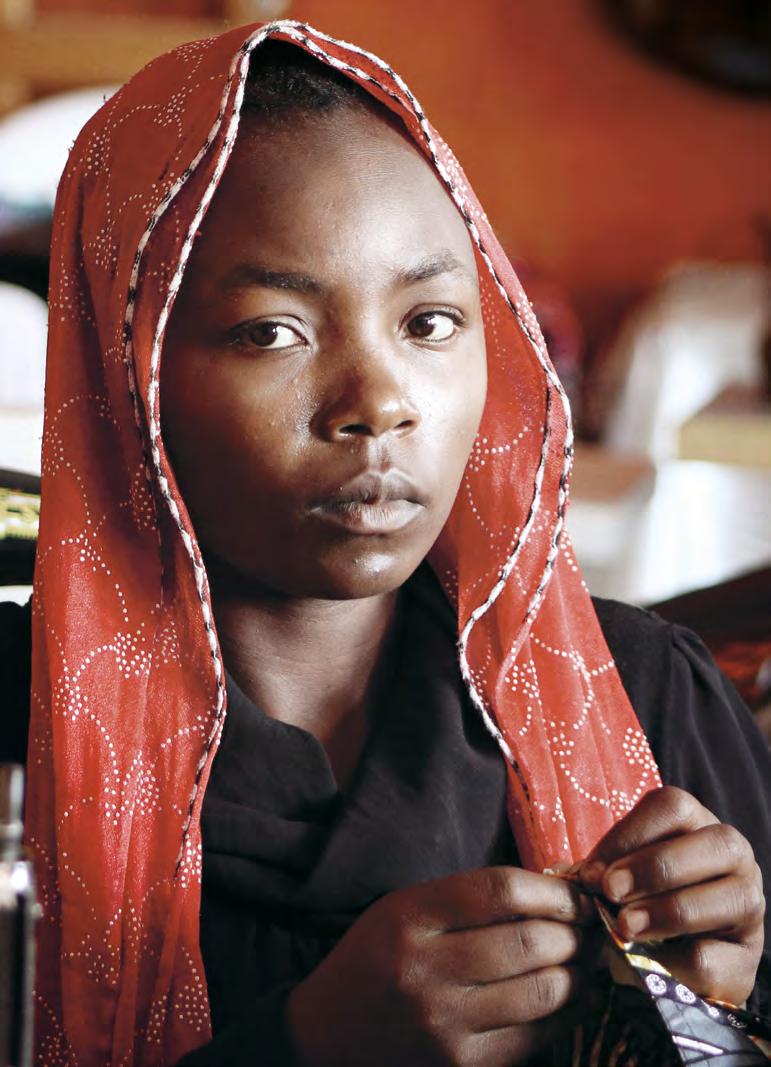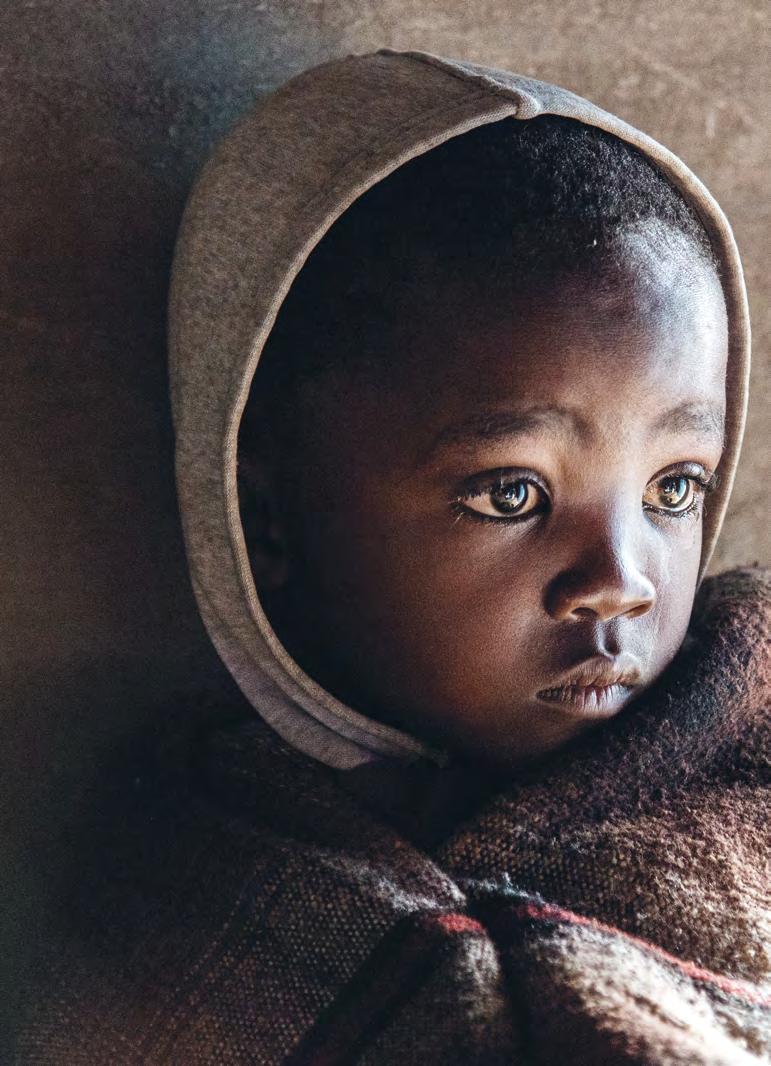
5 minute read
Ley Uwera: Reportage Guérir les corps, guérir les âmes
from FIELDNOTES_2
by aplus-net
REPORTAGE: GUÉRIR LES CORPS, GUÉRIR LES ÂMES
Les femmes de la République démocratique du Congo (RDC) sont parmi les groupes de population les plus faibles dans le conflit armé sévissant dans le pays. Selon des estimations, environ 1 100 femmes sont victimes de violences sexuelles chaque mois. Avec ses images impressionnantes, la jeune photographe congolaise Ley Uwera présente des femmes congolaises pendant leur long processus de guérison: pas comme des victimes, mais comme de véritables actrices sur leur chemin du retour à la vie.

LEY UWERA
Ley Uwera est une photographe née à Goma en RDC et basée en Afrique de l’Est. Diplômée en journalisme à l’Université de Cepromad, elle utilise la photographie pour documenter l’évolution sociale et culturelle de la partie est du continent avec un focus sur la RDC. Son travail a déjà été publié par Departures, Huck Magazine, The New York Times Lens blog, Upworthy, Vantage, Vrij Nederland et d’autres, elle a été exposée à Fès et à Istanbul, et dans le cadre du LOOK3 Festival of the Photograph à Charlottesville, VA.
6,200
Every week, around 6,200 young women aged 15 to 24 years become infected with HIV.
In sub-Saharan Africa, four in five new infections among adolescents aged 15 to 19 years are in girls. Young women aged 15 to 24 years are twice as likely to be living with HIV than men.




CONNECTING THE DOTS

Projet Fondation R. Geigy «Connecting the Dots»: enseignement, recherche et services dans la région des Grands lacs
L’engagement de Swiss TPH dans la région des Grands lacs est une longue tradition. De nouveaux bureaux ont ouvert en 2017 à Kigali (Rwanda) et Bukavu (RDC). La recherche médicale et les initiatives de services se sont concentrées particulièrement sur l’amélioration de la santé sexuelle et reproductive des adolescents et des jeunes. Le projet «Connecting the Dots», soutenu par la Fondation R. Geigy, confère un grand renforcement de capacité des activités de recherche d’implantation tout en favorisant la collaboration interdépartementale avec Swiss TPH. Dans un cours de formation spécial donné dans la région de Kivu marquée par les conflits en RDC, de futurs chercheurs africains ont appris à planifier, à conduire et à mettre en place des projets de recherche d’implantation. Le cours a attiré plus de 90 candidatures, ce qui prouve le grand besoin de telles initiatives dans la région.
74.9 mio [58.3 million–98.1 million] people have become infected with HIV since the start of the epidemic. 37.9 mio [32.7 million–44.0 million] people globally were living with HIV (2018).
36.2 mio [31.3 million–42.0 million] adults.
1.7mio [1.3 million–2.2 million] children (<15 years).
In Ost- und Südafrika, wo über 50 % aller Menschen mit HIV leben, ist die Anzahl Neuansteckungen bei Erwachsenen weltweit am stärksten zurückgegangen, insgesamt um 28 % seit 2010.
5,000 5,000 new infections per day.
1.8 mio [1.4 million–2.3 million] people became newly infected with HIV (2018).
8.1 mio 8.1 mio people did not know that they were living with HIV. • An estimated 1.8 million individuals worldwide became newly infected with HIV in 2017 – about 5,000 new infections per day. This includes 180,000 children (<15 years). Most of these children live in subSaharan Africa and were infected by their HIV-positive mothers during pregnancy, childbirth or breastfeeding.
• Approximately 75 % of people living with HIV globally were aware of their HIV status in 2017. The remaining 25 % (over 9 million people) still need access to HIV-testing services. HIV-testing is an essential gateway to HIV-prevention, treatment, care and support services.
• In 2017, 21.7 million people living with HIV (59 %) were accessing antiretroviral therapy (ART) globally, an increase of 2.3 million since 2016 and up from 8 million in 2010. HIV treatment access is key to the global effort to end AIDS as a public health threat. People living with HIV who are aware of their status, take ART daily as prescribed, and get and keep an undetectable viral load, can live long, healthy lives. There is also a major prevention benefit. People living with HIV who adhere to HIV treatment and get and keep an undetectable viral load have effectively no risk of sexually transmitting HIV to their HIV-negative partners.
• AIDS-related deaths have been reduced by more than 51 % since the peak in 2004. In 2017, 940,000 people died from AIDS-related illnesses worldwide, compared to 1.4 million in 2010 and 1.9 million in 2004.
• The vast majority of people living with HIV are in low- and middleincome countries.
• In 2017, there were 19.6 million people living with HIV (53 %) in eastern and southern Africa, 6.1 million (16 %) in western and central Africa, 5.2 million (14 %) in Asia and the Pacific, and 2.2 million (6 %) in Western and Central Europe and North America.
• Despite advances in our scientific understanding of HIV and its prevention and treatment as well as years of significant effort by the global health community and leading government and civil society organisations, too many people living with HIV or at risk for HIV still do not have access to prevention, care, and treatment, and there is still no cure. However, effective treatment with antiretroviral drugs can control the virus so that people with HIV can enjoy healthy lives and reduce the risk of transmitting the virus to others.
• Progress also has been made in preventing mother-to-child transmission of HIV and keeping mothers alive. In 2017, 80 % [61– >95 %] of pregnant women living with HIV had access to antiretroviral medicines to prevent transmission of HIV to their babies, up from 47% in 2010.
• However, despite the availability of this widening array of effective HIV prevention tools and methods and a massive scale-up of HIV treatment in recent years, new infections among adults globally have not decreased sufficiently.
HIV/AIDS

Symptome: Fieber über mehrere Tage; Schlappheit, Kopf-, Gelenk- und Muskelschmerzen; Hautausschlag an Rücken, Brustkorb oder Bauch; Durchfall; starker Nachtschweiss; schmerzende Mandeln, geschwollene Lymphknoten; wunde Stellen im Mund. Ist das Immunsystem so weit geschädigt, dass schwerwiegende Erkrankungen auftreten, spricht man von Aids.









